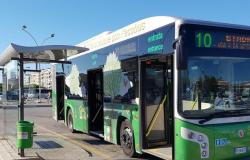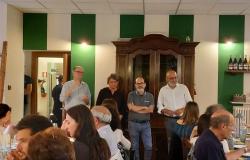
With the inauguration and the simultaneous opening to patients, the Assistance and Emergency Center (Cau) of the Local Health Unit of Romagna to Faenza becomes reality. Defined by some as the “Emergency room antechambers”the Cau are the new territorial structures created to provide an appropriate response to the urgent and non-serious health problems of the population.
The one in Faenza has been located in the “Marconi” business center where previously the Forensic Medicine Service was located and even before that the Medical Guard, on the ground floor in Via Ennio Golfieri 9, in a large and modern building which houses, between another, group medicine called “Medicina Generale Marconi” in which family doctors affiliated with the Local Health Authority and the Municipal Pharmacy 2 participate, with the convenience of a large car park which also serves the nearby Osservanza Cemetery.
The inauguration
The Faenza Emergency Assistance Center is the third present in the province of Ravenna, after those of Cervia and Ravenna, while from next week the one in Lugo will also be operational: it is active every day including holidays from 8am to 8pm, with direct access . Each shift is covered by a doctor and a nurse.
Born as an enhancement of local medicine, the Caus are part of Primary Care, with doctors and nurses ready to welcome and assist, in direct access, patients with urgent, episodic health problems of low health complexity. The Caus work in conjunction with family doctors and paediatricians and are designed to provide answers in the event of urgent but not serious health problems. The nursing staff are all employees of the Romagna Health Unit, while the doctors are freelancers affiliated with the Ravenna Primary Care and Community Medicine Department of the Romagnola Local Health Authority.
Mayor Massimo Isola, who has responsibility for healthcare, officially kicked off the activities of the Faenza Cau with the cutting of the tricolor ribbon; with him were Tiziano Carradori (general director of the Romagna Local Health Authority), Francesca Bravi (health director of the Romagna Local Health Authority), Donatina Cilla (director of the Faenza Health District), Davide Tellarini (director of the Civil Hospital for Infermi di Faenza), Mauro Marabini (director of the Department of Primary Care and Community Medicine of Ravenna) Katia Prati (director of Nursing and Technical Assistance of Ravenna), Francesca Luzi (director of Technical Activities of Ravenna; representing the councilor for Health Policies of Emilia-Romagna Raffaele Donini, Faenza regional councilor Manuela Rontini was there.
The substance of the Cau
“The Cau is actually a Cat, that is, a Territorial Assistance Center – said Daniele Morini, a general practitioner from Faenza -. It is therefore a center linked to territorial continuity. We, general practitioners, have made an agreement with the Emilia-Romagna Region which regulates these centers and establishes the importance of the territoriality of these structures. Unfortunately, most of the Caus that have arisen in Emilia-Romagna have characteristics very similar to a small emergency room which, unfortunately, also causes misunderstandings among the population which create a certain difficulty in understanding between what is a territorial structure relating to primary medicine and a hospital facility. I think that this will actually be the first real Cau of Emilia-Romagna, because the Romagna Local Health Authority has worked together with us general practitioners to create those premises, those characteristics that ensure that the Center has territorial characteristics. For example, what is fundamental is the creation of preferential routes: if I give structures of this type the opportunity to send patients directly to the hospital through urgent visit routes, as they are called in the emergency room, fast routes, and the I don’t give the same opportunity to general practitioners, this creates problems, because it creates ‘series A’ clinics and ‘series B’ clinics. This becomes a ‘series A’ clinic that sends people to hospital directly and mine becomes a ‘series B’ clinic that cannot do that. The Faenza Cau, on the other hand, will have exactly these characteristics, that is, the preferential paths, which were created specifically in this company, are from now on also given to General Medicine, therefore also to general practitioners – continued Dr. Morini -. It must be said that, while the Cau were born, the law changed: the National Collective Agreement that regulates relations between Medicine and Companies changed. The previous law allowed these structures to be close to hospitals, the new one does not. Probably because the public sector has realized that these are structures that work if they are territorial, otherwise they risk creating a redundancy of services that could be a waste, so from now on we are meeting with the Emilia-Romagna Region to always bring more these structures to the Territorial Functional Associations (Aft) of family doctors which will be the Group Medicines. The Faenza Cau already resembles that type of vision because in any case we are in a structure where there are health services, there is a service pharmacy, there is a Group Medicine of general practitioners, there are paediatricians of free choice, and therefore this is a Cau that already resembles what the Cau will be in terms of the law, hopefully, from now on”.
The link between citizens, local health authorities and institutions
The general director of the Romagna Local Health Authority, Tiziano Carradori, reiterated the importance of synergy with the institutions and the integration between hospital and local services that can no longer be postponed. “There are no recipes, but a hospital without territorial services and, vice versa, a territory without a hospital are not able to respond to the health needs of our population. This is the spirit that accompanied the birth of the Cau. When we say that many of the emergency room visits are inappropriate, we have to ask ourselves why. This project may represent a first response – adds Carradori -, but it is only by continuing to pursue the development and integration between the services and between the various pieces of the system and the professionals who work there, that the appropriate responses can be found”.
“We have created a project that only the Emilia-Romagna Region, with courage, could implement – commented Mayor Isola -. We also know that this stage represents a concrete response to the health needs of our citizens, even in the face of the critical issues of emergency rooms across the country. Only with the involvement of everyone, institutions, hospital, territory, general practitioners, can the right conditions be created, and the inauguration of the Faenza Cau is an important testimony to this”.
When to contact the Cau
The Cau guarantees, in addition to the services provided by Continuity of Care, non-complex services currently provided in the Emergency Department (White and Green Codes).
The visit and some diagnostic tests are free for all citizens resident or assisted in the Region, while for all others the visit will cost 20 euros, to be paid to the doctor, upon receipt. Further specialist services, prescribed by the Cau doctor for diagnostic completion, are paid for by the patient with the relevant ticket, if due, based on the exemptions held.
The Cau can provide:
– Medical examination
– Certifications
– Pharmacological treatment as needed
– Prescription of therapy for new onset pathologies or essential therapies
– Minor surgical procedures (e.g., sutures, dressings)
– Collection for laboratory investigations – POCT (Point of Care Testing, i.e. medical analysis carried out near the patient’s treatment and assistance site)
– Instrumental investigations – Electrocardiogram and radiological/ultrasound examinations
– Post-treatment observation
– Activation of paths/services to complete the diagnostic process
How access to the Cau works
The patient who accesses the Cau will be welcomed by trained nursing staff who will proceed with the assessment of the expressed health need. He will apply the protocols in use for the identification of the main problem, at the same time notifying the Cau doctor, in the event that the detection of the parameters deviates from the norm and/or the patient presents chest pain, dyspnoea, severe abdominal pain, unusual intense headache, acute neurological disorder.
In these cases the nurse or doctor of the Cau will contact the 118 Operations Center to activate the emergency transport of the patient to the Emergency Department, Urgency and Acceptance (DEA), i.e. the Faenza Emergency Department or one of the closest hospitals based on the type of treatment to be carried out.
In the absence of critical indicators, the medical evaluation will be carried out, using time as an access criterion, without prejudice to the fact that patients with particular frailties will receive priority.
The patient’s journey can follow different trajectories:
– resignation;
– prescription of further urgent checks with relative booking;
– referral to the General/Specialist Emergency Department for urgent further investigations;
– discharge with prescription of further tests with request for specialist visit with access mode B or D.
The Cau of Romagna
This brings the number of Assistance and Emergency Centers in the Romagna area to 13 today: Cervia, Ravenna, Faenza, Cesenatico, Mercato Saraceno, San Piero in Bagno, Cesena, Santa Sofia, Cattolica, Santarcangelo, Novafeltria, Rimini and Bellaria. The objective of the Romagna Local Health Authority is to open 21 Caus throughout the territory by 2025.
Also worth reading
https://www.ravennanotizie.it/0-copertina/2024/06/07/sanita-anche-faenza-avra-un-centro-di-sistenza-sistenza-associazione-il-10-giugno/





